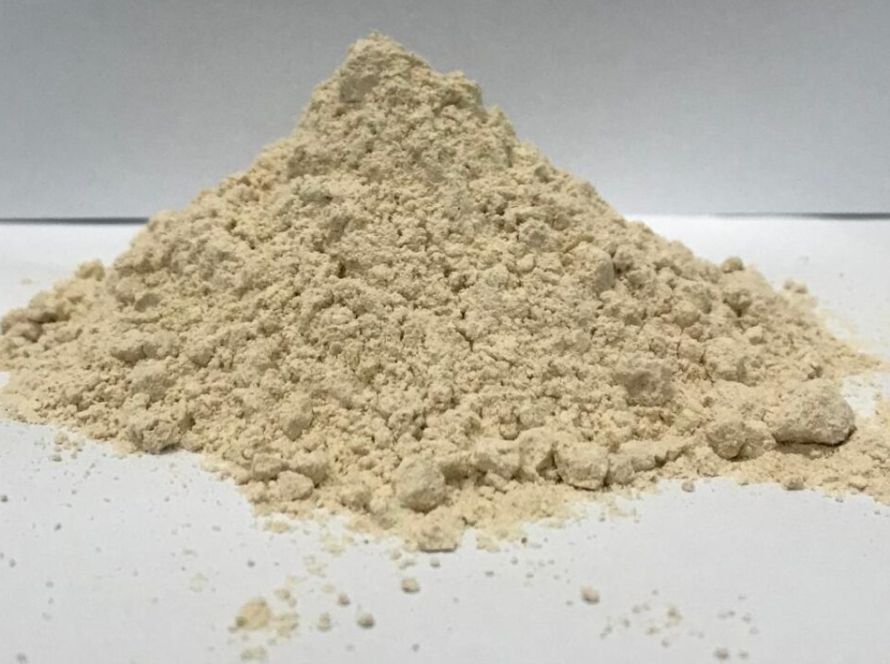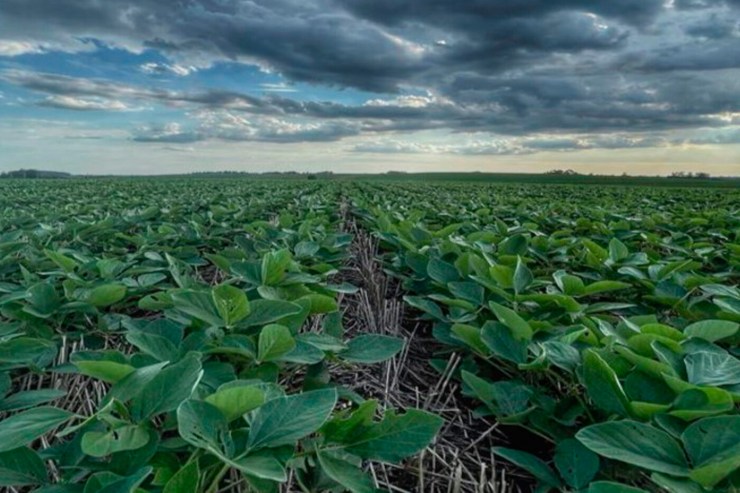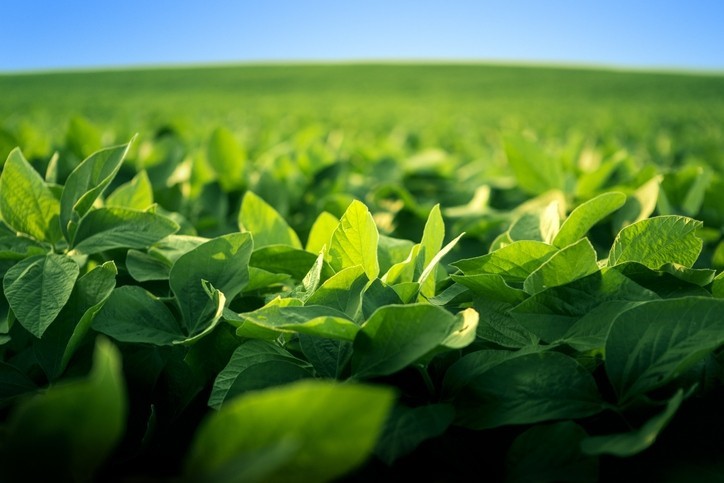Representatives from the São Paulo office of Korea Agro-Fisheries & Food and Trade Corporation (aT), a public food importer for South Korea, visited Value in Cultivation and Use (VCU) trials of Embrapa's conventional soybean materials conducted by Embrapa Cerrados (DF) at Fazenda Dourados, part of the Recanto Group, in Paracatu (MG), on August 28.
South Korea currently consumes approximately 360,000 tons of soybeans annually for food. In 2024, aT signed a memorandum of understanding to establish a partnership with Embrapa Cerrados and the Cerrados Foundation to develop high-yield, non-GMO soybean cultivars that will serve as the basis for the production of food products, primarily tofu, fermented soybean paste (doenjang), and soy milk.

Photo: Shutterstock
The Korean company has been importing beans from the United States and now wants to diversify its suppliers. The Unit initially sent beans from five strains for laboratory testing in the Asian country. "We produced tofu from the five Brazilian soybean samples and evaluated aspects such as yield, coagulation capacity, and flavor. Based on this analysis, two varieties were selected that closely resembled the tofu already consumed in the Korean market and showed the greatest potential as a soybean substitute," explains Yousun Jung, director of aT in São Paulo. In the coming weeks, 700 kg of these varieties will be sent for industrial testing.
Before heading to the farm, Jung and market analyst Lidia Kim were welcomed at Embrapa Cerrados by general manager Sebastião Pedro, technician Nilton José de Almeida, and seed producer Luiz Fiorese, president of the Instituto Soja Livre and Fundação Cerrados.
For Sebastião Pedro, the partnership is important because it allows the Unit's conventional soybean genetic improvement research to benefit from the participation of the Korean food industry, which will identify the most sought-after traits. "With this, we are implementing participatory breeding, where genetic selection for agronomic and quality traits can be guided by industrial parameters provided directly by the customer," he explains.
The general manager notes that this is the first time Embrapa Cerrados has undertaken this type of work. "With the industry's evaluation of the lineages, we are selecting materials that will directly serve this special purpose: the production of food for human consumption," he adds.
Producer attests to the potential of the materials evaluated
With 800 hectares of irrigated land, Dourados Farm was acquired just over two years ago by the Recanto Group. In addition to soybeans, it will also grow beans, corn, sorghum, and cotton.
The VCU trial on the property involves 132 lines from Embrapa's soybean genetic improvement program in the final competition phase – among them, one of those already selected by the Koreans, planted on 0.9 ha – and seven cultivars in the registration phase in an area of 6 ha under irrigation pivots, sown on June 3 and with harvest scheduled for early October.
In addition to evaluating agronomic performance, the idea is to send grains of materials for testing that can meet the nutritional requirements of the Korean food market, especially regarding protein content (which must be above 36%) and polyunsaturated fatty acids linoleic (Omega-6) and linolenic (Omega-3).
 Frederico Elias, one of the partners at Grupo Recanto, envisions two possibilities with the trial: "One is the multiplication of conventional soybeans for human consumption. And the other, which has been a pleasant surprise, is the potential of soybeans planted at this time for seed multiplication, which is not usually done," he states, highlighting the size and size of the plants, as well as the number of pods per plant.
Frederico Elias, one of the partners at Grupo Recanto, envisions two possibilities with the trial: "One is the multiplication of conventional soybeans for human consumption. And the other, which has been a pleasant surprise, is the potential of soybeans planted at this time for seed multiplication, which is not usually done," he states, highlighting the size and size of the plants, as well as the number of pods per plant.
Consultant Elmiro Queiroz explains that differentiated nutritional management, with fertilization rich in silicon, calcium, and boron, has contributed to the plants' healthy development even in winter, when the photoperiod (the period of daylight) is shorter and soybeans typically don't grow. "The plants are now in the grain-filling stage, with significant size. Preliminary results show that it is possible to produce highly productive soybeans, which allows us to multiply the material more quickly," he says.
He adds that the nutritional management used, in addition to promoting plant cell growth, made the leaves more rigid, which helped control caterpillars like the looper and alleviated whitefly pressure. "So far, we haven't sprayed for caterpillars or stink bugs," he adds, highlighting the cost savings.
For director Yousun Jung, seeing the different soybean varieties and lineages developed by Embrapa in the field was incredibly important. "I was curious to understand how the institution manages seeds for research, and I was surprised to learn that there are now over 130 in the experimental phase. It was a very enriching experience to see how well Embrapa's work is conducted and carried out in partnership with producers," she says.
Positive expectations
Luiz Fiorese predicts that by the middle of next year, it will be possible to obtain enough seeds to begin producing grains of two to three types in the 2026/27 harvest to meet Korean demand. "This is another market we're opening, expanding the range of conventional soybeans, which is not limited to the European market. We have to seize this opportunity," he emphasizes, noting that several countries have been subject to surtaxes from the United States and are seeking to diversify their imports.
 He adds that materials that achieve good production results in the Paracatu region, in northwestern Minas Gerais, and meet the Koreans' requirements should be adapted for production in other Brazilian soybean-growing regions. "Now we need to obtain the varieties needed to produce and serve a market that isn't limited to South Korea. Other Asian countries like Japan also demand this type of soybean," he notes.
He adds that materials that achieve good production results in the Paracatu region, in northwestern Minas Gerais, and meet the Koreans' requirements should be adapted for production in other Brazilian soybean-growing regions. "Now we need to obtain the varieties needed to produce and serve a market that isn't limited to South Korea. Other Asian countries like Japan also demand this type of soybean," he notes.
"AT and Embrapa are public institutions, and we believe that by sharing information and working together based on reliable data, we can contribute to the advancement of agriculture in both countries and, at the same time, generate benefits for the Brazilian and Korean populations," says Yousun Jung.





